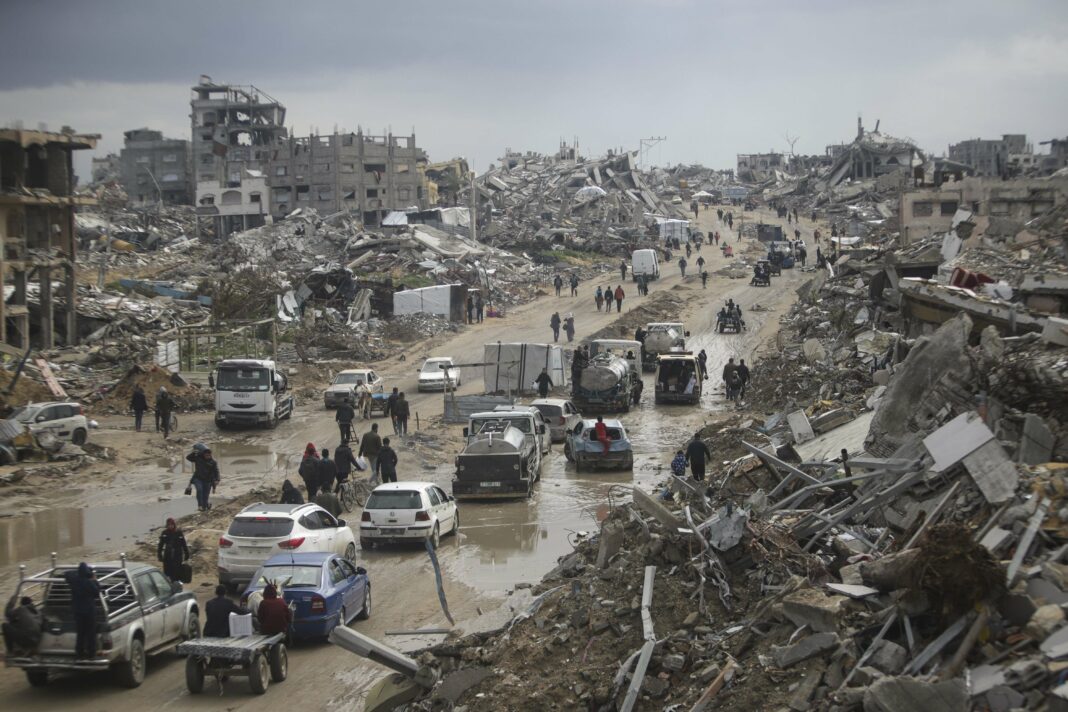Ceasefire tensions in Gaza are escalating as Hamas halts the transfer of Israeli hostages, prompting threats of renewed fighting from Israeli Prime Minister Netanyahu. Former President Trump suggests Israel should end the ceasefire if hostages remain unreturned. Amid this turmoil, regional reactions highlight complex strategic calculations, with Arab nations grappling with their support for the Palestinian cause. The future of the Gaza Strip remains uncertain, and the potential for renewed conflict looms large, impacting both local and regional stability.
Ceasefire Tensions in Gaza
After a brief period of relative calm lasting just three and a half weeks, the ceasefire agreement in the Gaza Strip is precariously hanging by a thread. Recently, Hamas made the announcement to halt the transfer of additional Israeli hostages, prompting a swift response from Israeli Prime Minister Benjamin Netanyahu. He issued a stern warning that if hostages are not released by noon on Saturday, Israel would resume “intense fighting.” In a related development, former U.S. President Donald Trump also suggested that Israel should terminate the ceasefire should all hostages remain unreturned by the deadline.
Despite the tensions, there remains a possibility for Israel and Hamas to negotiate an agreement, especially since Hamas’s claims appear vague and potentially resolvable. Nonetheless, as the first six-week phase of the ceasefire approaches its end in about two weeks, the potential for renewed conflict looms large. The likelihood of extending the ceasefire is diminished, especially considering the hardline factions within Netanyahu’s government that threaten to destabilize the coalition should such an extension occur.
Regional Reactions and Strategic Calculations
Hamas’s recent actions can be interpreted as a desperate attempt to maintain its grip on power in Gaza, rather than a reaction to Israel’s alleged breaches. This situation has become more complex due to Trump’s radical proposal that suggests permanently relocating the Gaza Strip’s population. This unexpected plan has introduced a new layer of urgency for both Hamas and various Arab nations, raising critical questions about whether such a strategy can be prevented.
It is evident that Trump’s relocation proposal cannot be executed without significant backlash. Many Palestinians are likely to resist any forced displacement without assurances of their right to return. Such actions would constitute a severe violation of international law, potentially isolating Israel on the global stage and jeopardizing vital peace agreements with neighboring countries like Jordan and Egypt. Additionally, merely shifting the Hamas issue to another location would not resolve the underlying conflict.
Many analysts view Trump’s Gaza initiative as a tactical maneuver typical of a self-styled negotiator; by presenting extreme and disruptive ideas, he compels other parties to engage and negotiate. This approach has left Arab nations scrambling to respond effectively. For instance, King Abdullah II of Jordan has offered to accept 2,000 sick children from Gaza as a symbolic gesture, while Egypt aims to present a comprehensive reconstruction plan for Gaza to the U.S., aspiring to foster a “complete and just peace” in the region.
However, the Arab governments face challenges in accommodating Trump, as public sentiment in their countries largely supports the Palestinian cause. While they have typically adopted a maximalist stance on Palestinian statehood, the unpredictable dynamics of U.S. politics may force Middle Eastern leaders to reconsider their strategies. There is potential for Arab states to approach Trump and Israel as collaborative partners, making clear their stance against Hamas’s continued governance in Gaza.
Simultaneously, these Arab nations could increase pressure on the Palestinian Authority (PA), which governs parts of the occupied West Bank. Both Arab leaders and regional experts have consistently pointed to the PA as the only viable alternative to Hamas. However, the current PA, under Mahmoud Abbas, is widely viewed as corrupt and ineffective, lacking the credibility to govern Gaza. Netanyahu has explicitly ruled out any involvement from the PA thus far.
Abbas has attempted to bolster his standing through various measures, including a crackdown on militant factions in the West Bank and the cancellation of controversial payments to families of deceased militants. Despite these efforts, he has yet to garner significant support from either Trump or Israel. If Arab states can initiate a genuine reform of the PA, it may change the dynamics of the situation.
Ultimately, the pivotal question revolves around Israel’s strategic calculations. Trump’s recent comments suggesting a return to conflict signal a potential shift in U.S. support for the ceasefire, which may embolden Netanyahu to pursue military action. While this could stabilize Netanyahu’s political position, it also poses significant risks to the lives of remaining hostages and could lead to a shift in public sentiment against him.
In the long run, Netanyahu might envision a scenario where conflict persists, with Israel maintaining a military presence along Gaza’s borders, keeping Hamas in check while allowing it to govern the territory. Unfortunately, the real victims of this strategy would be the two million residents of Gaza.
Moreover, any chance of normalizing relations with Saudi Arabia—a goal for both Netanyahu and Trump—could be jeopardized, along with Trump’s aspirations for a Nobel Peace Prize. Therefore, it is clear that discussions regarding the future of the Gaza Strip are far from settled, and Arab states now have a crucial opportunity to influence these negotiations.
